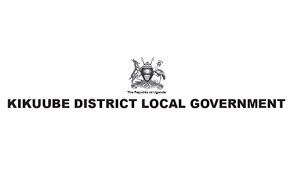Background
Kikuube District is one of the new districts in the country located in Bunyoro Kingdom; It was established by an Act of Parliament and became operational on 1st July 2018; Kikuube was curved out of Hoima District and covers the entire Buhaguzi County. The district is composed of 1 County, 5 Sub Counties namely; Bugambe, Buhimba, Kabwoya, Kiziranfumbi and Kyangwali. There are two town Councils; Kikuube and Buhimba. The district has 29 Parishes and 333 villages. The district has a total area of 2,098 square kilometers with population density of 211.5/km2. The western part of the district is covered by Lake Albert and approximately 905.9 Sq. Km which is about 43.2%
Population
The District has a total projected population of 443,752 including that of refugees out of which 222,640 are males (50.2%) and 221,112 females (49.8%). In terms of percentage, the population of Kikuube is evenly distributed at 50%. The host population is 320,792 and refugees 122,112 which is 26.3% of the total population. The refugee settlement is located in Kyangwali Sub County. Almost all refugees in Kyangwali Settlement come from DRC at 96.5% followed by South Sudan at 2.9%. The rest come from Rwanda, Burundi and Somalia. There has been an influx of refugees in Kikuube in the recent past putting pressure on the available social services like schools and health facilities as well as the environment. Besides the refugees, Kikuube District has a diverse population with Banyoro as the indigenous tribe. The migrants are mainly the Banyankore-Bakiga, Bafumbira, Alurs and some Banyarwanda.
Location
Kikuube District is located in the mid-western region of Uganda, with Kikuube Town Council the seat of the District Headquarters around 230 km from Kampala using the direct Kampala – Kiboga – Hoima – Kikuube road. It shares boarders with Hoima Districts in the North, Kyankwazi District in the East, Kagadi, Kakumiro, and Ntoroko Districts in the South. The District stretches to the national boundary of the Democratic Republic of Congo in the Western.
Climate
Kikuube District has a sharp variation in rainfall distribution, mainly due to differences in the landscape. The landscape ranges from the low-lying Rift Valley floor to the rift escarpment, and the raised hill ranges. The Rift Valley floor lies in a rain shadow and has the least amount of rainfall. The district receives a bimodal rainfall pattern with totals ranging from about 800 mm in the Lake Albert flat rising rapidly the further away East above the Escarpment to between 1250 – 1500 mm per annum before tapering off to 1000mm in the Eastern border areas of the District. The peak periods are between March – May and September to December. However, the rainfall pattern has become more erratic and less predictable. In general, the second peak rainfall (August to November) is higher than the early peak. This presents a very important potential for agricultural development.
Vegetation
The vegetation of the district can be broadly classified into forest, savannah, grassland and swamps. Human activities have had a great influence on the natural vegetation in the district, such as deforestation, wetland degradation, river pollution and many others as a result of rapid population growth.
Culture
The Kingdom of Bunyoro-Kitara was established following the collapse of the Empire of Kitara in the 16th century. The founders of Kitara were known as the Abatembuzi, a people who were later succeeded by the Abachwezi. Omukama of Bunyoro is the title given to cultural leader of Bunyoro Kitara Kingdom. The Royal Palace, called Karuziika Palace, is located in Hoima. The current Omukama is Solomon Iguru I and his wife is the Queen or Omugo Margaret Karunga.
Topography
Kikuube is part of the Albertine graben which forms part of the western arm of the Great Rift Valley with an altitudinal range of about 3000- 5000 ft. above sea level. It’s a Cenozoic rift basin formed on the Precambrian organic belts of the African Craton.
Soils
Kikuube soils are ferralitic and generally acidic. However, they have adequate organic matter especially on the lower slopes and in the valleys. The soils are typically loam and deep on the valley slopes but tend to be shallower on the upper slopes. Soil erodibility is low, rainfall erosive is generally moderate. The water table is high with soils frequently water logged.
The soils of Kikuube are defined by a number of parameters, which include parent rock, age of soil and climate. As mentioned in the paragraph above the most dominant soil type is ferralitic soil. Productive soils are scarce, therefore, fair and low productivity soils in some parts of Kabwoya Sub County along the lakeshore and partly Buhimba.
Economic Activities
Livelihood
Agriculture is the main source of livelihood for about 90% of the population, both in terms of basic nutritional needs, income generating activities and social organization. Maize, rice, cassava, banana, beans are the main food crops whereas tobacco, tea and sugar cane are the main cash crops grown in the district. Also live stock represents an essential part of Kikuube’s agriculture as well as poultry and piggery on a smaller extent.
Kikuube district is richly endowed with natural water bodies and this has made fishing a major economic activity for communities living along the Lake. Most Fishing is done on Lake Albert, and this has greatly influenced the social and economic development in the district.
Oil and gas mining are a recent economic activity in the Albertine rift valley in the sub counties of Kyangwali and Kabwoya. The oil activities in the Albertine Graben are taking place in a unique and vulnerable environment with many of the activities taking place at or close to the shores of Lake Albert. Oil is garnering much attention because it will be the source of a majority of Uganda’s public revenue, and a primary contributor to the country’s Gross Domestic Product (GDP).


